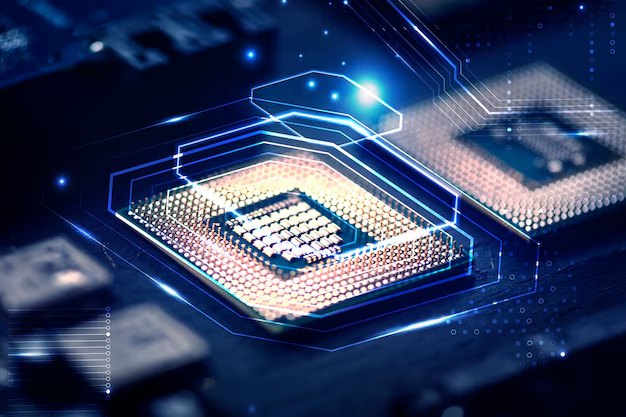Description
Introduction: IoT with Embedded Systems
IoT is transforming industries by enabling the connection of embedded systems to the internet, allowing data collection, communication, and control of devices remotely. This training covers the integration of IoT with embedded systems, focusing on designing and programming microcontroller-based devices that communicate over networks. Participants will learn how to build IoT solutions using embedded systems, sensors, communication protocols, and cloud platforms. Through hands-on sessions, they will develop skills to implement real-world IoT applications in areas such as smart homes, healthcare, industrial automation, and environmental monitoring.
Prerequisites:
- Basic understanding of microcontrollers: Familiarity with embedded system programming and architectures.
- C programming knowledge: Experience in writing and debugging embedded C code.
- Basic electronics knowledge: Understanding of sensors, actuators, and basic circuit design.
- Networking fundamentals: Basic knowledge of IP addressing, communication protocols, and the internet.
- Familiarity with development environments: Exposure to IDEs for embedded systems (e.g., Arduino IDE, STM32CubeIDE).
Table of Contents
1: Introduction to IoT and Embedded Systems
- Overview of IoT and Embedded Systems
- What is IoT?
- Role of embedded systems in IoT
- Key components of an IoT system: sensors, actuators, microcontrollers, gateways, and cloud
- IoT Use Cases
- Applications in smart cities, healthcare, agriculture, and industry
- Session Activities:
- Setting up the development environment (Arduino IDE/STM32CubeIDE) for embedded IoT applications
2: Introduction to Sensors and Actuators for IoT
- Sensor Overview
- Types of sensors: temperature, humidity, motion, proximity, etc.
- How sensors interface with embedded systems
- Actuators in IoT
- Types of actuators: motors, relays, LEDs, etc.
- Controlling actuators via microcontrollers
- Session Activities:
- Interfacing sensors and actuators with an embedded microcontroller (e.g., STM32, Arduino)
3: Communication Protocols for IoT
- Wired and Wireless Communication
- Overview of wired protocols: UART, SPI, I2C
- Wireless protocols: Wi-Fi, Bluetooth, Zigbee, LoRaWAN
- Internet Communication Protocols
- Introduction to TCP/IP, HTTP, MQTT, and CoAP
- Understanding REST APIs for IoT devices
- Session Activities:
- Implementing serial communication (UART/I2C) between sensors and microcontrollers
4: Introduction to Networking for IoT Devices
- Networking Basics
- Overview of IP addressing, MAC addresses, and DNS
- Network architectures for IoT: Client-server model, P2P
- Networking Embedded Systems
- Setting up a microcontroller with networking capabilities (Wi-Fi/Bluetooth)
- Connecting devices to local networks or the internet
- Session Activities:
- Writing code to connect a microcontroller (e.g., ESP32) to a Wi-Fi network
5: Cloud Platforms for IoT
- Introduction to IoT Cloud Platforms
- Overview of popular IoT platforms: AWS IoT, Microsoft Azure IoT, Google Cloud IoT
- Benefits of cloud integration for data storage and remote control
- Data Management in the Cloud
- Sending sensor data to the cloud
- Visualizing data using dashboards and analytics
- Session Activities:
- Sending sensor data from an embedded system to an IoT cloud platform (e.g., ThingSpeak or AWS IoT)
6: MQTT Protocol for IoT Communication
- Introduction to MQTT
- What is MQTT, and why is it suited for IoT?
- Broker-based communication: publishers and subscribers
- Implementing MQTT on Embedded Systems
- Setting up an MQTT broker and client on a microcontroller
- Sending and receiving data using MQTT
- Session Activities:
- Implementing an MQTT-based communication between two IoT devices (e.g., temperature sensor and control system)
7: Data Security and Privacy in IoT
- Challenges in IoT Security
- Common IoT security threats: hacking, data breaches, unauthorized access
- Importance of data encryption and authentication
- Securing IoT Embedded Systems
- Implementing secure communication (SSL/TLS)
- Device authentication and data encryption techniques
- Session Activities:
- Setting up secure data transmission using SSL/TLS for an embedded IoT system
8: Edge Computing and IoT
- What is Edge Computing?
- Processing data locally on the device rather than sending it to the cloud
- Benefits of edge computing: reduced latency, increased speed, and offline operation
- Edge Computing on Microcontrollers
- Running machine learning models on microcontrollers
- Reducing bandwidth usage by pre-processing data locally
- Session Activities:
- Implementing simple edge computing techniques for data filtering and local decision-making on an embedded IoT device
9: Power Management in IoT Devices
- Challenges of Power Efficiency in IoT
- Battery life optimization for remote IoT devices
- Using low-power modes in embedded systems
- Low Power Microcontroller Programming
- Using sleep modes and wake-up events
- Powering sensors and communication modules efficiently
- Session Activities:
- Implementing low-power techniques in an IoT device, using sleep modes and wake-up events
10: Building a Complete IoT System
- End-to-End IoT System Design
- Integrating sensors, microcontrollers, communication protocols, and cloud platforms
- Handling data collection, processing, and cloud integration
- Best Practices for IoT Development
- Modular design, debugging, and deployment of IoT systems
- Ensuring scalability and maintainability of IoT applications
- Session Activities:
- Designing and building a complete IoT system (e.g., smart home monitoring system) that includes sensors, data transmission to the cloud, and remote control
11: Real-World IoT Applications
- Case Studies in IoT
- IoT applications in healthcare, agriculture, smart cities, and industrial automation
- Review of cutting-edge IoT solutions deployed in real-world scenarios
- IoT Development Challenges and Future Trends
- Challenges faced in IoT deployments (scalability, security, and standardization)
- Emerging trends: 5G, AI at the edge, and IoT in Industry 4.0
- Session Activities:
- Analyzing real-world IoT case studies and discussing potential future developments
12: Project Presentation and Review
- Final Project Implementation
- Participants present their IoT system, built throughout the training
- Reviewing code, design, and cloud integration
- Discussion and Feedback
- Feedback on IoT solutions, best practices, and optimization techniques
- Session Activities:
- Presenting and demonstrating the final project, with peer and instructor feedback
This training provides participants with comprehensive knowledge of IoT systems, covering both embedded programming and communication protocols. By the end of the course, learners will have the skills to design, build, and deploy IoT solutions using embedded systems for real-world applications.
If you are looking for customized information, please contact here







Reviews
There are no reviews yet.